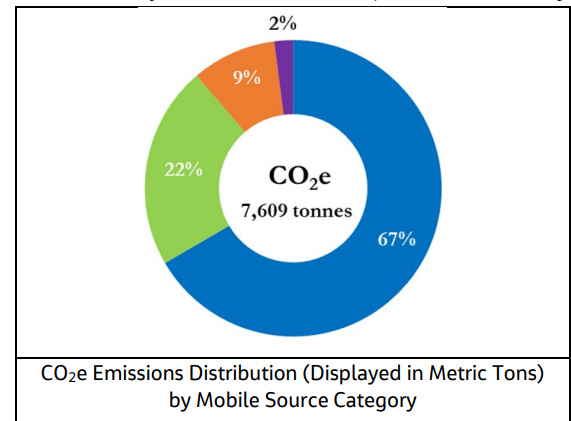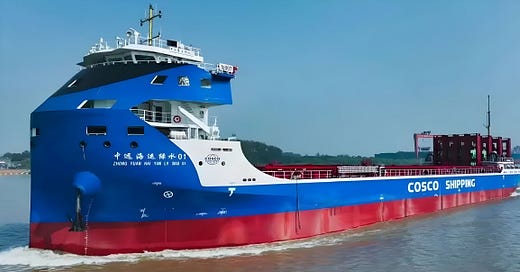Your future Amazon order may arrive by an E-cargo ship at a Net Zero Port + Bezos' plan to electrify all US school buses
The Good News Round Up #3
While ocean transport is one of the lowest carbon ways to ship goods, the maritime sector still accounts for 3% of global greenhouse gas emissions annually. Business-as-usual would mean tripling those emissions by 2050 according to a GHG study by the International Maritime Organization.
The potential for electrified shipping to disrupt the trendline became tangible earlier this year when COSCO Shipping —the world’s second largest shipping company — launched the 10,000-ton cargo ship named Green Water 01. This 393-foot ship is the first long-range EV powered cargo ship and is powered by a 50 MWh battery. To put that into perspective, that equates to 1,000 EV car batteries.
The U.N.’s International Maritime Organization (IMO) has set science-based GHG reduction targets: 40% by 2030 and 70% by 2040, aiming for net-zero by 2050.
In a net zero future, it is not just the ships that have to convert their fuel sources and increase efficiency; Ports must also modernize.
In my town, the Port of Cleveland is forward-thinking and implementing an impressive Electrification and Net Zero Emissions Master Plan. The plan includes capacity and infrastructure upgrades, on-site solar installation, EV chargers for vehicles and cargo handling equipment and hybrid cranes.

Speaking of Amazon . . . The Bezos’ Earth Fund is mobilizing its $10 billion endowment toward energy system transformation. One of the game-changing contributions they are making is to electrify the entire US fleet of 480,000 school buses by 2030. Not only should that save school districts operation and maintenance costs, but it will reduce Diesel and ICE pollution and particulate matter that impact the health of children and communities. According to a Bloomberg NEF interview, Bezos says partners are already halfway through implementing the US school bus fleet conversion.





